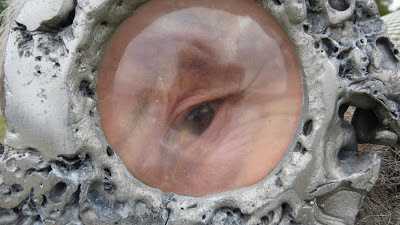I blogged about this place a couple of years ago, but B and I recently returned. We found it every bit as enchanting as before. Thanks to a strolling guide, we learned more about the flowers that have made this place a destination for nature-lovers.
This is Erythronium umbilicatum, or dimpled trout lily. The botanical name comes from the long, thin (umbilical) cord that runs from the bulb up through the soil to the base of the plant that we see. The common name comes from the mottled coloring of the leaves that is thought to resemble trout skin.
The plants are rare in Florida and uncommon in the area of Georgia where these are found. But tucked away on the slope of this property near Whigham in Grady County is the largest known collection of this species in the world: there are literally millions. This has been calculated by counting the number of plants in a square foot that can exceed 100. We must have seen them at their peak, as the slope was covered in the yellow blooms. Because the afternoon light is required for the buds to open, looking into the light is problematic when photographing. Trust me: the ground was covered with the plants and their yellow flowers.
Here you can get a better idea of the density of the flowers.
Here is a bud, yet to open.
Below, there is a honeybee in the flower on the top right. We saw several in flowers that were open in the sunshine. They are also reportedly pollinated by ants.
A seed pod forms.
When it opens and the seeds fall to the ground, ants are attracted to them by a sticky coating and carry them into the ground. The new crop is seen sprouting below. It will take between four and six years before they will flower.
There is only a brief opportunity to observe this beauty. The leaves come up in January and the blooms are only open for a few weeks in early February, closing each evening and reopening only on sunny afternoons. By April, the leaves also disappear and there is no sign of the plant until the following January.
Here is the website for the preserve we visited:

















































